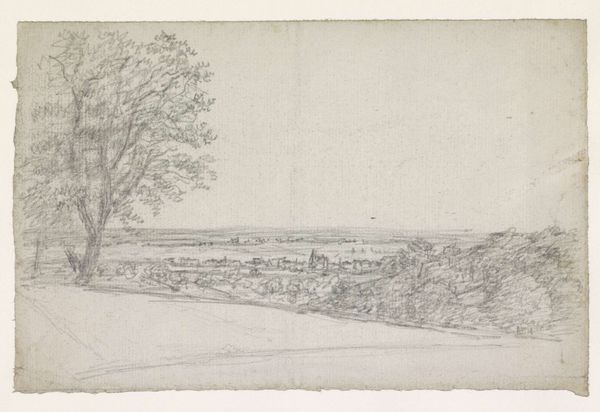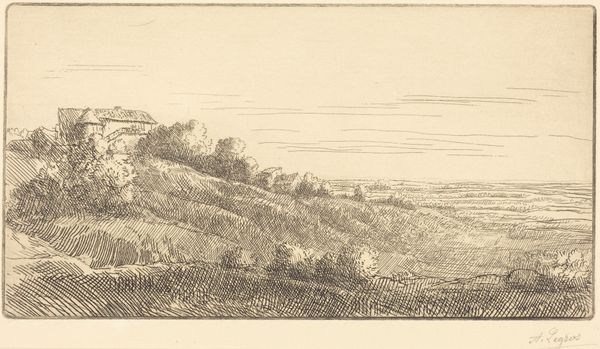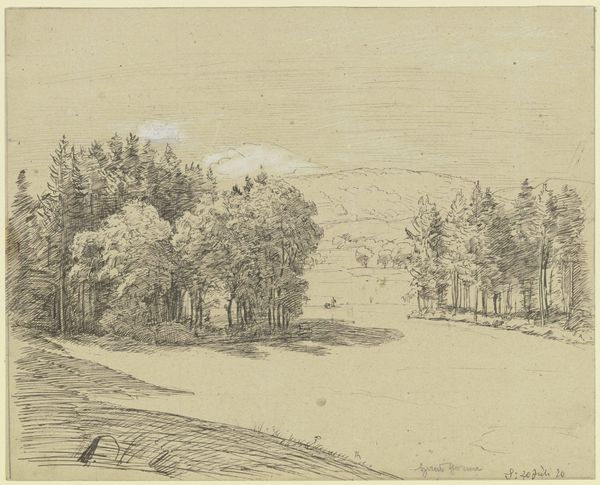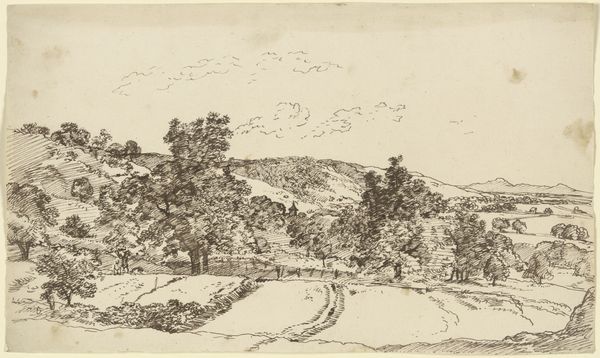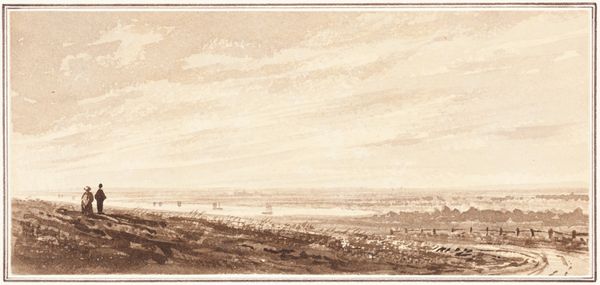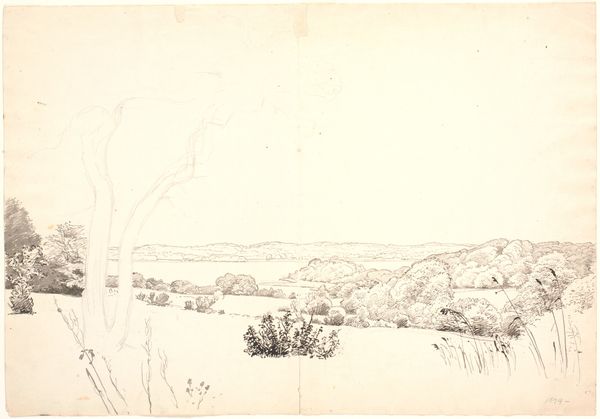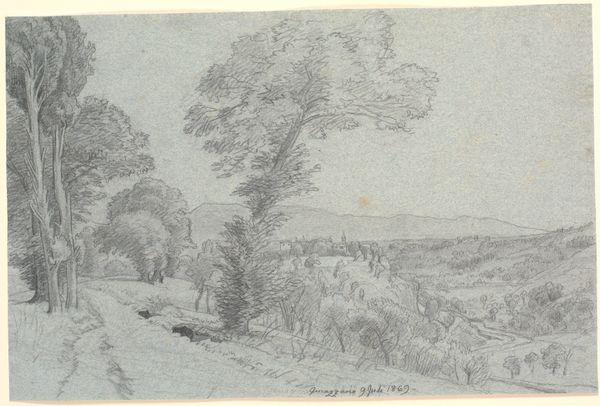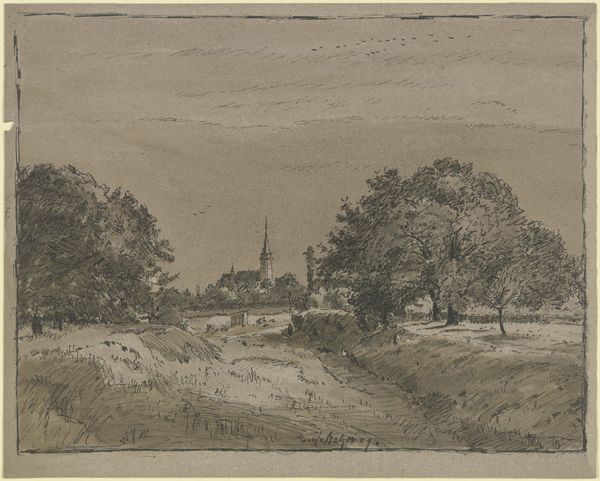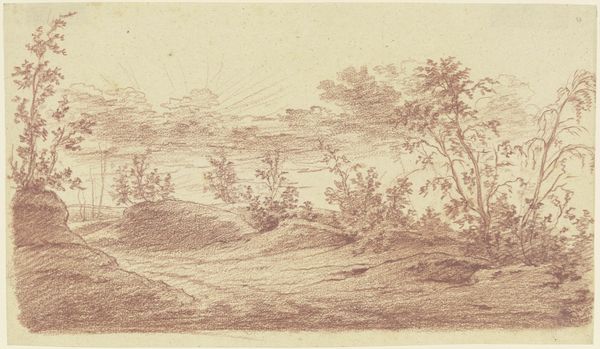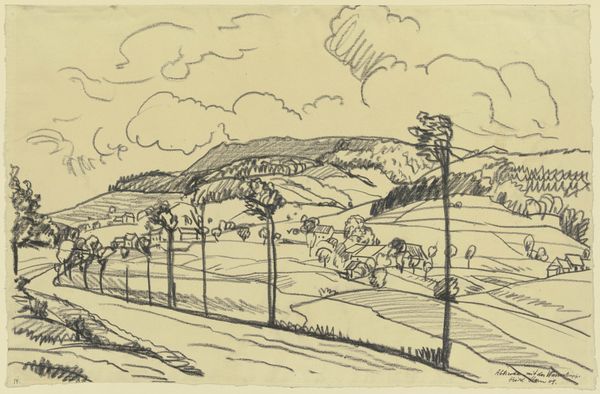
drawing, ink, pencil
#
drawing
#
landscape
#
ink
#
pencil
#
cityscape
#
realism
Dimensions: 124 mm (height) x 276 mm (width) (bladmaal)
Editor: So, this drawing is "Landevejen til Leksand Kirke, Dalarne" – "The Road to Leksand Church, Dalarna" – by Wilhelm Marstrand, created in 1851. It's done with pencil and ink. I find the composition quite serene; there's something peaceful about the road leading towards the church. What strikes you when you look at it? Curator: What I find interesting is how Marstrand depicts the Swedish landscape and its socio-political context. Remember, mid-19th century art often reflected national identities. Landscape became a vehicle to express ideas about nationhood and cultural values. How do you see this playing out here? Editor: I see that the church is featured prominently in the distance, suggesting its central role in the community, right? Curator: Precisely. Churches weren't just religious institutions; they were often the heart of social life, sites of governance, and community identity. This drawing then speaks volumes about the role of religion and community in Swedish life at the time. Look at the tiny figure walking. Does this relate to a burgeoning sense of national identity do you think? Editor: Well, it's subtle, but I see how the drawing could celebrate a humble, perhaps idealized, view of rural life. The ordinary person, connected to the church and the land. Curator: And this 'ordinary person' and her quiet way of life – does it not embody specific ideas around Swedish values, national character and how they are conveyed to the public via art institutions, artistic choices and even the landscape style that is used? These were key aspects of nation-building efforts, reflected in cultural productions like Marstrand’s drawing and the role this artwork later adopted as a symbol. Editor: That makes a lot of sense! I never considered the deliberate construction of national identity through art in such a specific way. It really shifts how I view this piece. Curator: Exactly. By analyzing its historical and cultural context, we can appreciate its significance beyond just being a pretty landscape drawing. It tells a larger story. Editor: It’s fascinating to realize how landscape art can be so deeply intertwined with politics and identity. Curator: Indeed, art is never neutral. It reflects, reinforces, and sometimes even challenges the power structures of its time.
Comments
No comments
Be the first to comment and join the conversation on the ultimate creative platform.
